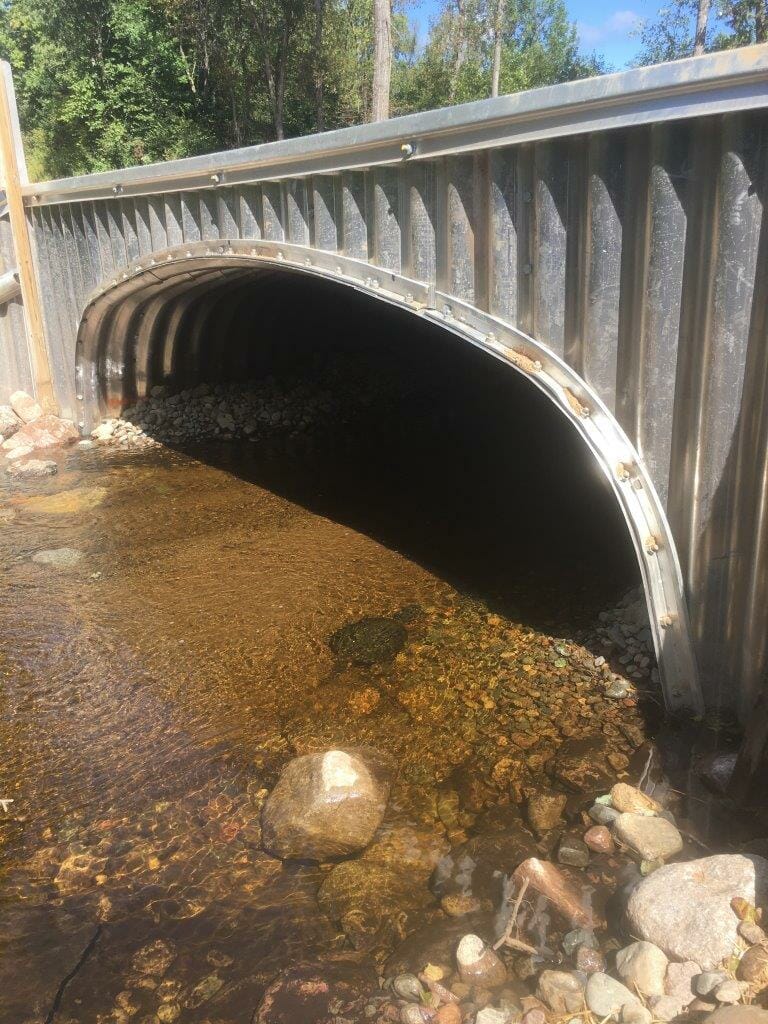A snapping turtle takes advantage of a aquatic organism passage project on Halley Creek in Wisconsin.
The Great Lakes region is one of the most important freshwater systems in the world, and since Trout Unlimited’s inception in Grayling, Mich., in 1959, TU has always had a strong presence in the region. That commitment continues to thrive and expand, with TU’s efforts in the Great Lakes region covering all of TU’s core tenets of protection, restoration, reconnection and sustainability. Here’s a look at some of the TU staff’s major efforts and accomplishments in 2017.
Great Lakes Stream Restoration – Wisconsin
In 2017, Trout Unlimited staff and volunteers helped to reconnect 42 miles of coldwater habitat within the Peshtigo River watershed in Northern Wisconsin, as part of TU’s Great Lakes Restoration Program.
In collaboration with the U.S. Forest Service and the Wisconsin Department of Natural Resources, 10 inadequate culverts were replaced with fish-friendly structures. An additional road crossing located on private industrial forest land was removed.
In all, the projects eliminated 11 aquatic organism passage barriers and improved instream habitat. As a result brook trout can once again migrate between critical spawning and rearing habitat and deeper, forage-rich winter habitat. The work generated a great TV news story that aired during a Green Bay Packers game this past fall.
Thanks to a grant from the National Fish and Wildlife Foundation and the ongoing support for the Great Lakes Restoration Initiative (GLRI), we will be continuing our efforts here in northern Wisconsin. Our objective for 2018 is to reconnect an additional 25 miles within the Peshtigo system through the replacement of five more culverts.
In addition to our culvert work, we are very excited to be a part of the North Branch Oconto Restoration Partnership. In 2018, we will be assisting in the restoration of 2.6 miles of wild brook trout habitat through the heart of Wabeno. This will entail the removal of mill dams, a culvert replacement and instream habitat improvements.
Ongoing support from the Wisconsin Council and chapters, in the form of generous financial contributions and letters of support, have been critically important in this effort.
For more information on TU’s WI Great Lakes Stream Restoration Program, contact program manager Laura MacFarland at laura.macfarland@tu.org.
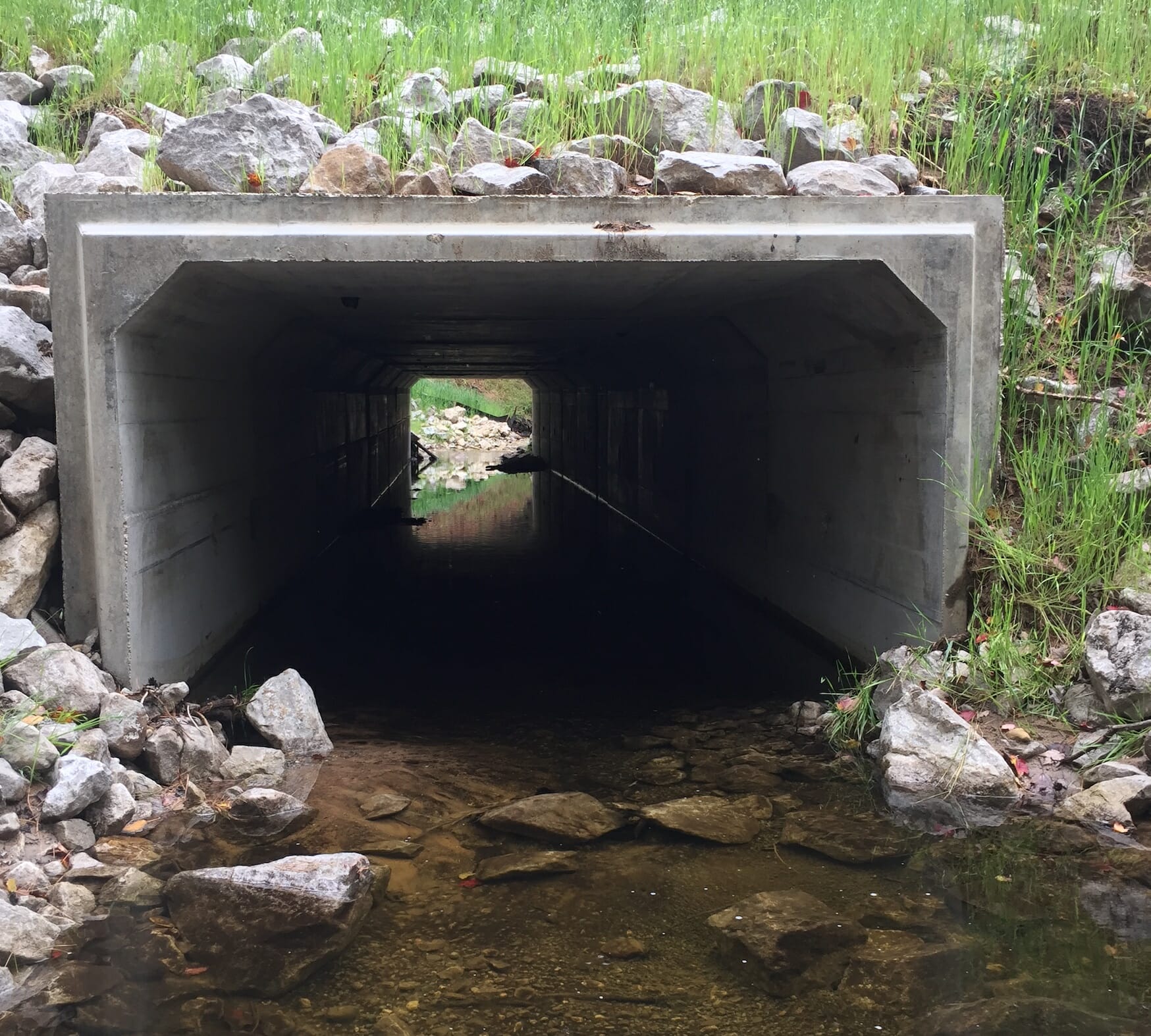
Great Lakes Stream Restoration – Michigan
It was an active year for TU Great Lakes stream restoration staff in Michigan. In 2017, TU completed four habitat restoration projects using wood additions, one small dam and pond removal, and five road culvert improvement projects, reconnecting and restoring over 31 miles of coldwater stream habitat.
TU worked with area partners, such as staff from the Huron-Manistee National Forest[JG1] , to prioritize, plan, design and implement the restoration work. Projects occurred in some of the most productive trout waters in the state such as the Big and Little Manistee Rivers, the Pine River and Bigelow Creek watersheds. The construction season stretched unusually late into the fall, with crews working through snowy weather to complete the season’s final project.
To complement the in-stream restoration projects, TU staff and volunteers planted more than 1,000 native trees and shrubs in riparian areas in the Pine and Big Manistee River watersheds. The native plants will eventually provide stream bank stability and shade, and will help ensure coldwater habitat for the resident brook trout.
TU staff also worked with citizen scientists from local TU chapters to conduct habitat surveys and temperature monitoring in the Pere Marquette River at more than 12 locations. The Pere Marquette River is a Blue-Ribbon Trout Stream with legendary migratory fish runs. The citizen science efforts will help direct and prioritize future restoration work.
To monitor current restoration projects, and to prepare for the upcoming field seasons, TU staff and field technicians conducted ground surveys at 10 road/stream crossing project sites and completed biological surveys (fish and invertebrates) at eight sites.
For more information on these Michigan projects, contact Jeremy Geist at jeremy.geist@tu.org.
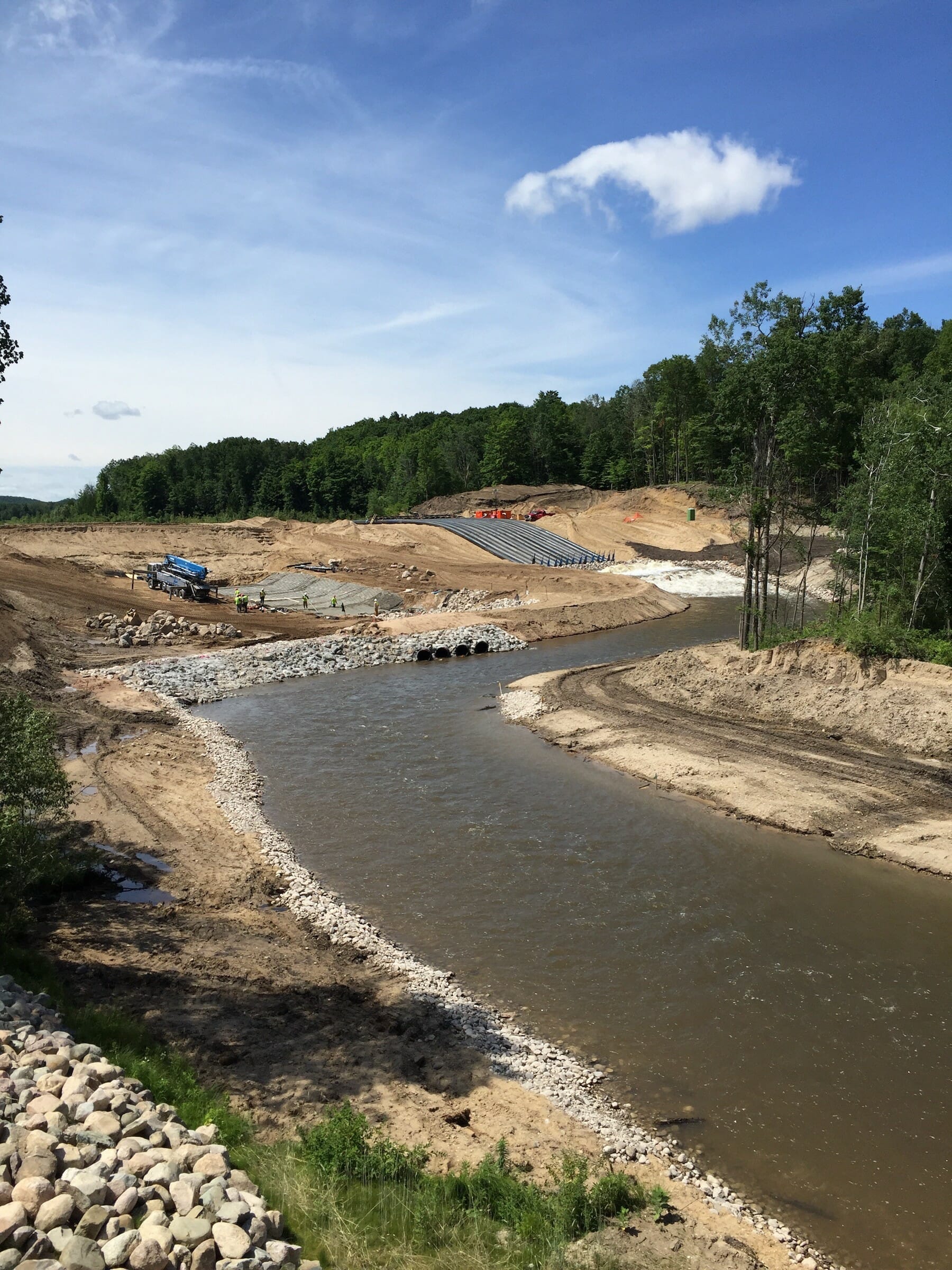
Also in Michigan, Trout Unlimited is acting as a sub-contractor to provide construction oversight of the Boardman Dam Removal river restoration project (above) in Traverse City.
The Boardman Dam, originally constructed in 1894 as a hydropower generation dam, had no fish passage capabilities.
The project is one of three dam removals on the Boardman River, with a goal to enhance and restore cold water habitat and allow fish passage up and down the system by reconnecting 160 miles of high quality river habitat.
The Boardman restoration project is considered to be the most comprehensive dam removal and restoration projects in Michigan’s history and one of the largest such projects in the Great Lakes Basin. The river restoration construction work of the Boardman Dam removal began in the spring of 2017 and will be complete in the late spring of 2018.
For more information on the Boardman Dam project, contact Greg Orum at gregory.orum@tu.org
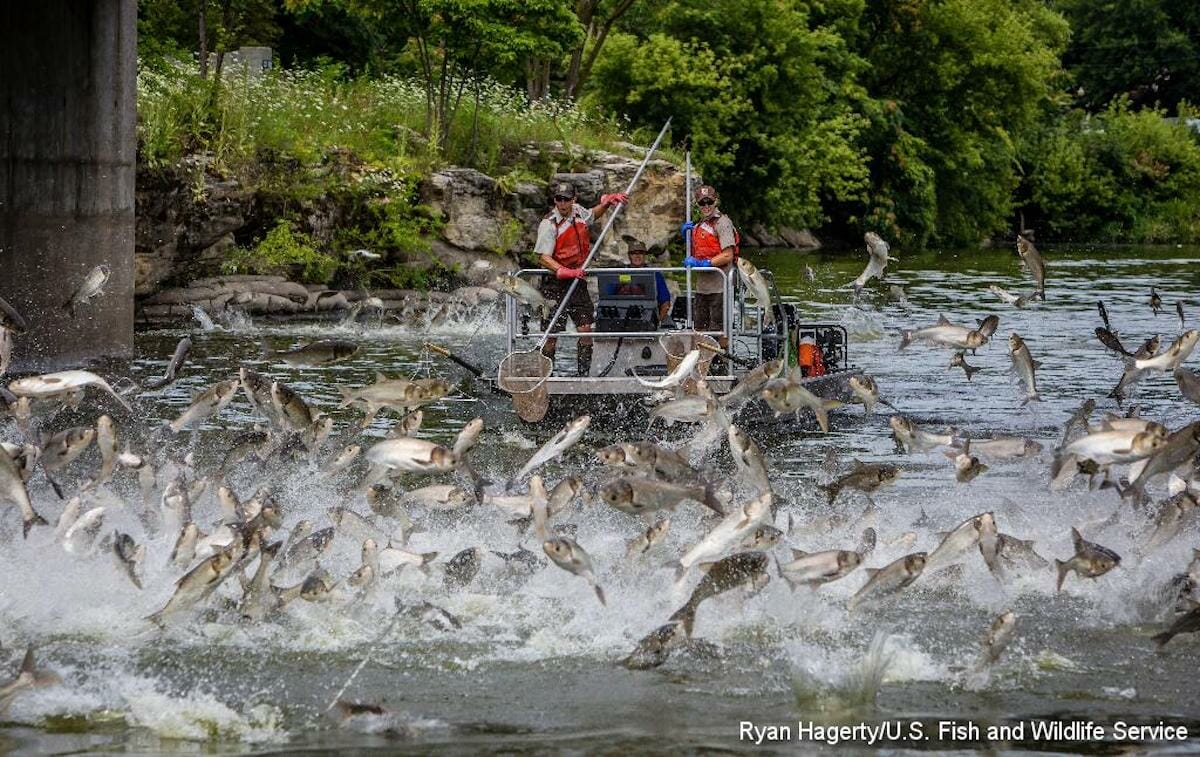
Great Lakes legislative update
Trout Unlimited staff and volunteers continue to advocate for protection and restoration of coldwater resources in the Great Lakes region.
On November 20, the U.S. Senate Appropriations Committee released the FY 2018 Interior and Environment funding bill, which included $300 million for the Great Lakes Restoration Initiative (GLRI).
TU will continue to work with Congress to ensure that the GLRI receives full funding annually. For an in depth look at GLRI dollars at work in the Great Lakes region, check out the feature in the Winter 2018 edition of TROUT Magazine.
TU is also closely following efforts to address the spread of non-native Asian carp (above) in the Great Lakes region. The US Army Corps of Engineers concluded the public comment period on Dec. 8regarding its report on the issue, which outlined various plans for addressing the spread of Asian Carp at the Brandon Road Lock and Dam. TU is hopeful that the Army Corps will move forward with the Tentatively Selected Plan (Technology Alternative: Electric Barrier with Complex Noise) and will continue to urge the Corps to expedite the completion of the project. Thank you to the TU members who submitted over 150 comments.
For more information on Trout Unlimited’s efforts regarding state and federal legislation in the Great Lakes region, contact TU’s Great Lakes Organizer, Taylor Ridderbusch, at taylor.ridderbusch@tu.org. Follow at https://www.facebook.com/greatlakesadvocacy/.
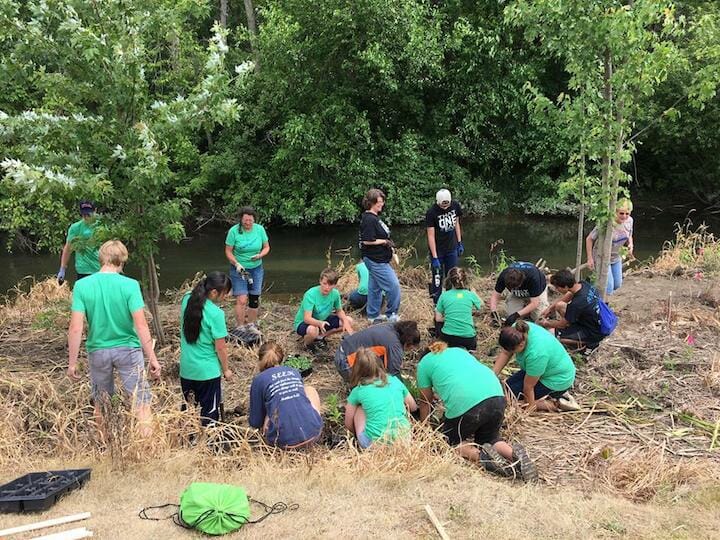
Rogue River Home Rivers Initiative
Trout Unlimited’s Rogue River Home Rivers Initiative staff wrapped up another successful year in Michigan in 2017, which marked the beginning of new initiatives and exciting partnerships as well as continued progress towards effective protection and restoration projects, community engagement, and citizen science programs.
New opportunities arose in 2017 with the acquisition of funding made available through the Regional Conservation Partnership Program to target agricultural areas of the watershed, which make up about 50 percent of the land use. Through this grant program, Trout Unlimited is working with partners like the Natural Resources Conservation Service over the next five years to help farmers to implement best practices to address water quality, fish and wildlife habitat, and sedimentation. We are confident that the $2.3 million of funding will result in substantially improved habitat and water quality within this important southern Michigan fishery.
Another program made its West Michigan debut in 2017: Trout Unlimited’s Stream Girls, a partnership with Girl Scouts of the USA to introduce young women to their local streams with hands on learning and activities. Rogue River staff kicked off the program with a successful first day where 36 girls investigated a local stream, studied macroinvertebrates, tied fishing flies, and learned to cast a fly rod!
Trout Unlimited had a national audience this spring when River Rally, a national conference hosted by the River Network, brought environmental professionals from all over the country to see the Rogue River, visit a local brewery, and tour restoration projects throughout the watershed.
It was a busy spring in the Rogue River watershed this year as Trout Unlimited worked on its Great Lakes Restoration Initiative grant for stormwater implementation and education. As part of the grant, Rogue River staff partnered with a local middle school to install a bioswale of native plants to filter stormwater runoff before entering the river, stencil educational messaging near storm drains, and distribute 25 rain barrels to the local community to capture rainwater from their roof before it enters local streams at high volumes. Stormwater runoff is the primary threat to water quality in West Michigan because it carries sediments and other pollutants into the stream along with increasing flows and temperatures that impact sensitive trout populations.
The Rogue River Home Rivers Initiative staff continued its third year of the popular Green Team program. Sixteen high school students from local communities were hired to work throughout the summer to install and maintain green infrastructure projects such as riparian stream buffers and rain gardens. One of their hallmark projects was a stream bank restoration in the Village of Sparta along Nash Creek where they re-vegetated the banks of the degraded Rogue River tributary to manage sediment and rising temperature. The annual estimated loading reductions for the project are 0.9 tons of sediment which will help improve critical trout habitat.
For more information on TU’s Rogue River Home Rivers Initiative, contact program director Nichol DeMol at nichol.demol@tu.org or program coordinator Jamie Vaughan at jamie.vaughan@tu.org or visit our Facebook Page at facebook.com/RogueTU.



